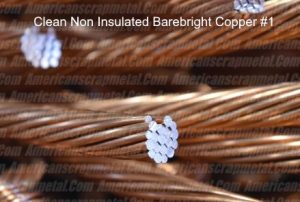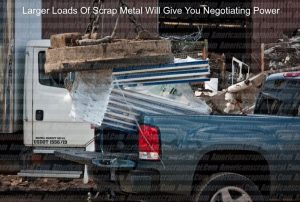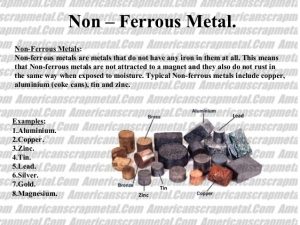
NAIROBI, Kenya, 2019-Nov-28 — /EPR Network/ — The best and most popular areas in Africa for safaris are East Africa precisely Kenya which offers vast plains and roaming packs of extraordinary beasts.
Many travelers come to Africa in search of the “big five”: buffalo, lions, leopards, elephants and rhinoceroses. The chance to get close to these animals in their natural habitats is a once-in-a-lifetime experience, but your trip to the Africa is anything but a trip to the zoo. Safaris can be physically taxing and strenuous, and you may not see all the animals you expected. Since most safari destinations are in developing sub-Saharan nations, travelers must take certain safety and health precautions. If you’re planning a safari (or just dreaming about it), be as prepared as possible. Get some good guidebooks, talk to friends who’ve been to Africa and research, research, research. We’ve outlined some important safari basics, from choosing a destination to getting vaccinated, to help you start planning a successful African adventure such as short trip to the Nairobi National Park which can be booked online through https://www.cruzeiro-safaris.com/nairobi-national-park or through their Online booking Platform https://cruzeiro-safaris.com/nairobi-tours/
According to the popular magazines tour visits to Kenya to the park within the city have greatly increased due to proximity and easy booking platforms from Cruzeiro Safaris Kenya. Group travel is made easy because of the flexibility of timings.
Follow the links for book and pay options
Option 1: 6am – 11am – Nairobi National Park Morning Tour
https://cruzeiro-safaris.com/nairobi-tours/product/nairobi-national-park-tour-morning/
Option 2: 2.00pm – 6.30pm – Nairobi National Park Afternoon
https://cruzeiro-safaris.com/nairobi-tours/product/nairobi-national-park-tour-afternoon/
Option 3: 6am – 3pm – Nairobi National Park, Elephants, Giraffe and Lunch at Carnivore
https://cruzeiro-safaris.com/nairobi-tours/product/nairobi-national-park-tour-elephants-orphanage-and-lunch/
Option 4: 10am – 6.30pm – Elephants, Giraffe, Lunch at Carnivore and Nairobi National Park
https://cruzeiro-safaris.com/nairobi-tours/product/tour-to-elephants-giraffe-and-nairobi-national-park/
Option 5; 6am- 1pm – Nairobi National Park and Elephant Orphanage
https://cruzeiro-safaris.com/nairobi-tours/product/nairobi-national-park-tour-and-elephants-orphanage/
Option 6: 6am – 3pm –Nairobi National Park, Elephants and Giraffe (without lunch)
https://cruzeiro-safaris.com/nairobi-tours/product/nairobi-national-park-tour-elephants-orphanage-and-giraffe-center/
Option 7: 6am – 11am – Nairobi National Park Morning tour including park entry fees
https://cruzeiro-safaris.com/nairobi-tours/product/nairobi-national-park-tour-morning-including-park-entry-fees/
Cost Includes:
• Game viewing drive,
• Transport pick up and drop off from hotel / Airport
• Lunch where applicable on the package
• Entry to Giraffe center with applicable package
• Entry to Elephant Orphanage with applicable package
• Safari Driver guide
Not Included in the published price are government park entry fees as follows:
– Entrance fees of US Dollars $43 per adult and USDollars $22 per child – Nairobi National Park
The above fees Are paid by strictly credit card at the point of entry on the same travel day. No cash is accepted.
https://cruzeiro-safaris.com/nairobi-tours/product/nairobi-national-park-tour-morning/
https://cruzeiro-safaris.com/nairobi-tours/product/nairobi-national-park-tour-afternoon/
Amboseli National park is featured in their August – December Promotions
Holidays are everybody’s ideal way to relax and see the world. As our guests get to experience the wildlife and other products we have to offer such conservation is of outmost important. We support conservation by preferring to prioritize Eco-lodges and thereafter the other camps and Budget Camps as well. The Amboseli National Park is very near Nairobi about 3 hours drive one way.
At these eco-facilities you will be able to learn more about how important they are to secure the existence of the local environment and how you are directly helping the local community by choosing to stay in such an accommodation.
2-Day Amboseli Trip
Amboseli Safari Package
WildlifeSafaris that feature Masai mara By Road Safaris
https://cruzeiro-safaris.com/nairobi-tours/product/3-day-masai-mara-safari-wildebeest-migration-kenya-safari/
https://cruzeiro-safaris.com/nairobi-tours/product/4-day-africa-safari-in-kenya-to-masai-mara-and-lake-nakuru/
https://cruzeiro-safaris.com/nairobi-tours/product/6-day-amboseli-nakuru-and-masai-mara-safari-game-drives/
https://cruzeiro-safaris.com/nairobi-tours/product/9-day-african-safari-package-nairobi-to-mombasa/
It’s very important to get yellow fever certificate while entering Kenya and if possible have a prepaid VISA which saves you time at the busy Jomo Kenyatta International Airport. Also Pre-book your Taxi from Nairobi Airport for your hotel transfer. https://cruzeiro-safaris.com/nairobi-tours/product/nairobi-airport-transfer/
Welcome to Nairobi, Welcome to Magical Kenya.
About Cruzeiro Safaris Kenya
Cruzeiro-safaris.com is established in Kenya, incorporated in 2004. Its core business is safari packages and day tours complemented by air travel. It has a well-established wealth of experience in arranging memorable tours and safaris and has established a client base who provide with repeat business year after year. Join us on facebook, twitter and youtube. Safaris in Kenya may be tailored to the tourist taste and can extend to Tanzania and Uganda. Browse and read reviews on trip advisor page and one can also book from trip advisor link.
For further information and reservations, contact;
Claudia Kabui
Mobile : +254-(0) 722-370833 (Kenya)
Sales: + 254 (0) 710-729021 (Kenya)
Email: info@cruzeiro-safaris.com
Website: | https://www.cruzeiro-safaris.com and https://cruzeiro-safaris.com/nairobi-tours/





